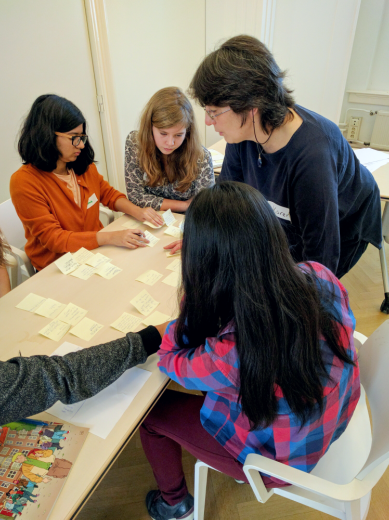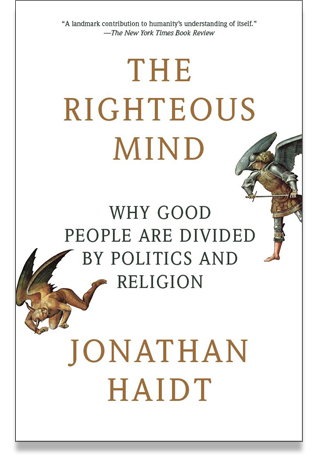Rosalind Wiseman's Blog, page 21
February 13, 2018
Social Media Armor: Are You Really What You Post?
With my team at Cultures of Dignity, I am constantly working to improve our lesson plans for young people. Of course, some issues that young people face are universal like friendship breakups, rejection and jealousy. However, as social media increasingly integrates into young people’s social lives and influences their identity development, we have to regularly revise our tools to help them understand how they are processing these dynamics.
Recently we had an idea: In our Owning Up curriculum, we ask students to do an armor exercise to reflect on what they show to the outside world vs. what they’re privately feeling and thinking. It is a great way for students to realize why there may be a difference between the two and how that difference may show up in their interactions with others. This difference, between the “public” and “private” you, is one of the fundamental issues for young people and their social media use. We have modified the exercise and are sharing it here.
Activity: How do we build our social media armor?
The purpose of the activity is to process and put into words how students “choose” to present themselves in public and online.
Everyone who uses social media develops a social media personality. This personality is both a reflection of how you want others to see you and also how others see you based on your social media activity. And everyone has their own personal armor that they show online through social media. Understanding why you choose the images and information you post is critical to self-awareness.
Here’s how the activity works.
First, have students look through their recent posts on Instagram, Finstas (fake, private Instagram accounts), Snapchat Facebook, Twitter (or any apps they use) with a critical eye. The goal is to get a sense of what they have been showing the world about themselves and why.
Here are questions they can consider as they look through their posts:
What type of pictures are you posting?
What language, emojis and hashtags are you using?
How are you posing? Who are you taking pictures of? What are you taking pictures of?
What type of articles, videos, and posts are you sharing?
What type of filters and edits are you using?
What type of posts do you respond to and how do you respond?
If you are posting with other people, what is your relationship to them?
Is your communication over social media similar to how you communicate in person?
What type of “you” are you curating?
Next, have the students think about what they just learned through the self-reflection and write words and/or draw pictures to describe or represent what they share on social media. Have them reflect on this question: What does your social media personality show to the world?
Then, on the other side of the paper, have them identify in words or images what they don’t show people. Have them reflect on these questions: What do you choose to keep to yourself? Who are you behind the screen?
Examples of their responses to both might include:
I post pictures only with friends or on vacation which shows that I am social and happy.
I post selfies that may show me as confident and feeling attractive, happy and good about myself.
I don’t post about negative feelings like when I’m sad, angry or lonely.
I don’t share pictures of me doing some of the things I like to do because I don’t want people to make fun of them.
Next, have students take out a piece a paper and answer the following questions—they should include the numbers that correlate to their responses:
Have you ever posted something about yourself that is completely false? What was it and why did you post it? How did you feel after posting it?
Have you ever significantly altered your image or post? What did you do and why?
Have you ever tried to communicate complex, deep or real feelings online? What happened?
Examples might include: using a photoshop app to edit body shape, whitening teeth or posting a photo from a terrible night and saying you had a great time.
Explain to students that they will be passing around their sheets anonymously and then students will read aloud responses that were written by other students. Be sure to remind the students of the confidentiality agreement you have made before any session like this: what is said in the room stays in the room and do not provide identifying information. If you are concerned that sufficient trust hasn’t been built in the group, you can ask only students who want to share voluntarily. Remind students that they always have a right to pass.
To debrief this activity, use some or all of the following discussion questions and/or writing prompts:
What is the difference between being “fake” and trying something on as a new way to present yourself to the world?
What are the positives and negatives of the particular armor you wear online, and why do you choose it?
How do you feel about your armor?
Do you ever wish you could take it off or replace it? If so, how?
What would happen if you showed aspects of yourself you usually keep hidden?
How does communication on social media make it easier to say things that you wouldn’t normally?
Here are some takeaways and key points to make if the students don’t raise them on their own:
Everybody develops a social media personality.
It is common to curate an image that reflects what you want people to think about you rather than an accurate depiction of who you are.
There can be important reasons for why people hide parts of themselves on social media because they might not feel safe sharing all aspects of who they are.
The difference between your social media personality and who you really are can make it harder to feel good about yourself just as you are.
Your comments and messages can define your social media personality as well.
By addressing social media like we are here, we aren’t lecturing young people about all the bad things we think they’re doing online. We aren’t telling them that their posts are superficial. We’re actually saying the opposite and in a way that encourages the development of their critical thinking and self-awareness in an area of their lives that many of them care deeply about.
Providing young people with the skills to stop and think in the moment about what they’re doing on social media that may be demeaning to themselves or others begins by teaching them how to recognize their motivations and enable self-reflection. Remember, what they choose to present on social media is critical to understanding how they are absorbing cultural messages and then processing those messages as they develop their self-identity and beliefs about their role in their community.
This article originally appeared on Rosalind’s Classroom Conversations on ADL here
Recent Posts
Social Media Armor: Are You Really What You Post?
Putting Feelings To Words: A Conflict Management Strategy
Change is the next step



February 1, 2018
Putting Feelings To Words: A Conflict Management Strategy
Of all the things to teach students about character development and bullying prevention, convincing them to talk to a person they’re angry with is probably the hardest. For good reason, students think it’s too intimidating, won’t make a difference or even may make the problem worse. And they’re right. Young people must have an effective realistic approach that also admits how strange and scary it can feel to face the problem. At Cultures of Dignity, we have a strategy called SEAL that addresses both challenges.
SEAL is an internal process to manage yourself for when you’re angry with, frustrated with, or even worried about someone. This framework will teach you how to critically think in moments of conflict. It doesn’t tell you what to say, it shows you how to think through the problem and put words to your experience. It also reframes what success means in facing the problem–because any step a person takes to think through a conflict is a success. So…teaching SEAL is also way you for you to empower your students to critically think in moments of conflict
SEAL is also about identifying the “pushback”, the person’s response that could make you so angry, defensive, or distracted that you lose the ability to communicate effectively.
SEAL helps to clarify one’s feelings and more effectively communicate those feelings to others. You don’t “SEAL” with the expectation that the problem will go away and you don’t have to say the words in a specific order. Instead, the goal is to increase your power and improve your chance of being heard.
SEAL
STOP: Breathe, observe, and ask yourself what the situation is about. Decide when and where you can talk to the person so the person will be most likely to listen to you.
EXPLAIN: Take your bad feelings and put them into words. Be specific about what you don’t like and what you want to happen instead.
AFFIRM: State your right to be treated with dignity by the other person and your responsibility to do the same in return. If appropriate, admit anything you did that contributed to the problem/situation.
LOCK: In the relationship, take a vacation (or take a pause in the relationship) or lock it out (as a last resort)*
*If “lock out” feels too permanent, think about how relationships can be like velcro – they can stick and unstick in countless ways. So if you need to separate from a relationship (unstick) you can always come back together again.
Remember even in the best of circumstances this process is difficult. It always feels awkward. People on the receiving end can’t be counted on to appreciate what we say. But when we think through the process we will much more control to handle ourselves in a way we can be proud of.
This post appeared on CrisisGo– who provides tools for schools to increase safety awareness, improve rapid response, connect parents and school staff, and improve procedures with comprehensive data.
Recent Posts
Putting Feelings To Words: A Conflict Management Strategy
February 1, 2018
Change is the next step
January 23, 2018
Meet The 2018 Cultures Advisory Council
January 22, 2018



January 23, 2018
Change is the next step
Rania Khan is a 14 year old pupil at the International School of Amsterdam. We met Rania at her presentation with her faculty from International School of Amsterdam on the online toolbox, Stories that Move, that challenges young people to think critically about diversity and discrimination, and to reflect on their own position and choices in these matters. Below is her powerful message.
Change is the next step
By Rania Khan
I’ve lived in two very different countries. I was born and raised Bangladesh but the Netherlands has had a profound impact on who I am. It has made me believe in action and change.
I was recently one of a group of pupils from the International School of Amsterdam (ISA) invited to the Anne Frank House to try out Taking action and Mastering the media, the fourth and fifth sections of the Stories that Move tool. I had previously tested the section on identity with my year group at school, as some of our teachers were contributing to its development. This time, however, five of us were asked to go to the Anne Frank House with ten members of the ISA chapter of Amnesty International to provide youth feedback.

Rania and her classmates testing the learning paths Taking action and Mastering the Media
In the Taking Action section, we were shown a video clip of people who experienced a terrorist attack at close range, or experienced day-to-day discrimination, or were trying to address these issues. We were asked to think about the contexts and the longer-term forces that had caused these situations. The ISA has pupils from 40+ countries. This diversity ensured a broad range of ideas, each uniquely informed by the participant’s own life experiences.
In Mastering the media, we were asked to list different media according to the amount of time we spent on them, the level of trust we had in them etc. This prompted us to confront how our habits limit our worldview. We looked at media bias and the importance of separating fact from opinion. Every single student came away energised, keen to spot subconscious biases and take action.
This process of testing Stories that Move made it clear to me that people my age are perfectly capable of evaluating and discussing sophisticated concepts. If we expect ourselves to think deeper and act more effectively – if we presume the best, and understand young people to be capable of changing the complicated forces that shape our world – we might be on our way to much-needed solutions.
If we expect ourselves to think deeper and act more effectively – if we presume the best, and understand young people to be capable of changing the complicated forces that shape our world – we might be on our way to much-needed solutions.
So, accessible tools like Stories that Move, which sets out to engage young people in a lifelong conversation starting with ‘What’s wrong?’ and ending with ‘What can I do about it?’, are important. In fact, I think the world needs them more than ever.
This piece originally appeared on Stories that Move here.
Recent Posts
Change is the next step
January 23, 2018
Meet The 2018 Cultures Advisory Council
January 22, 2018
How to Have Honest Conversations About Social Media with Students
January 16, 2018



January 22, 2018
Meet The 2018 Cultures Advisory Council
The Cultures Advisory Council is a way for us to stay connected with young people around the world. Culture is ever-shifting and we need eyes, ears, and opinions. These students work with us, advise us, and share their insights and experiences.
Learn a little bit more about each of them below!

Annie is a junior at the Fountain Valley School of Colorado and loves Nutella, painting, and hippos.

Marcos goes to New York University and can’t stop playing Bananagrams!

Tessa is a sophomore at Bowdoin College and loves speaking French and eating lentils.

Emily is a senior at Tara High school in Boulder. She loves hanging out with her friends and eating brownies.

Marley is a senior at Fairview High School and loves the Golden State Warriors (especially Steph Curry)!

Keo studies civil engineering at Montana State. He’s interested in aspects of problem-solving that aren’t math related, but people related.

David is a sophomore at Lafayette College in Easton, PA. Through international travel, David has pursued his interest in French and is considering majoring in psychology and history.
January 16, 2018
How to Have Honest Conversations About Social Media with Students
Who hasn’t sent a text or email to the wrong person? Who hasn’t posted something online they later regretted or seen something in their feed that made them uncomfortable? These are difficult moments for people, no matter their age, and it’s natural to be unsure what to do. But the most common advice young people get about social media is usually limited to “Think before you send” and “Once you post something, it’s always there.” These clichés may be true, but they don’t help young people address the situation they’re in.
If you work with young people in any capacity, you are also teaching social media norms and expectations. But what do norms mean in the context of social media? Norms are a standard or pattern of social behavior that is typical or expected of a group. Our social media use is still so new that we are all trying to figure out what our social media norms are and should be. From when we use it to how and where, we are all trying to figure it out as we go.
We start by looking in the mirror. We must reflect on how we use social media ourselves. What is true for our students is also true for us.
When it comes to issues that impact their lives, young people are equal to us in subject-matter expertise, if not more so. But this is easy to forget. When we do, we miss the larger context and therefore the opportunity to actually accomplish our goals: teaching them how to apply critical thinking to the information they receive, recognizing when it is being used to manipulate their opinions and perceptions, defining what responsible social interactions online look like, and developing awareness about how its use can impact their sense of self and understanding of the world.
So how do we do this? We start by looking in the mirror. We must reflect on how we use social media ourselves. What is true for our students is also true for us. Social media is a constant social exchange (for better and worse), a way to maintain important connections and relationships, a place to find support and share interests with like-minded people (especially when you can’t find it in real life), and a source of information that profoundly impacts the way you see yourself and the world around you.
Reflecting on Your Own Experiences
At Cultures of Dignity, we believe that successfully teaching any kind of social and emotional learning requires teachers to ask themselves the same questions they ask their students. Before initiating a discussion with your students on topics of responsible social media use, take some time to reflect on your own experiences with this exercise:
Part One:
Put a check next to the question if you can answer “yes.” Have you …
Posted something, then checked repeatedly to see how many people liked it or made a comment?
Accidentally sent an email or text to the wrong person?
Been in school when someone showed you a post about you, a colleague, a parent, or a child that made you feel sad or anxious and didn’t know what to do next?
Had a friend or someone in your family post something that made you really upset and affected your relationship with that person?
Now write down a few sentences that describe your experiences and feelings to any of these questions.
Part Two:
Look back on your social media posts of the last six months and ask yourself the following questions:
If a stranger saw the posts you just looked at, what would they think about you?
What do you want people to think about you and your life?
How accurately do your online posts and interactions reflect what’s going on in your life?
Do you take steps to protect your online privacy? How important is privacy to you?
Is the way you handle conflict online similar to the way you handle conflict in real life? Are you proud of how you conduct yourself in either or both contexts?
Bringing Your Reflection into the Classroom
Now take a step back and remember that the majority of young people are extremely skeptical about anything we tell them regarding how to use social media. We have to show them that we are doing the work we are asking them to do. We have to show them that we acknowledge we are affected by social media too. So no matter what you teach — math, social studies, Spanish, language arts, or computer coding — sit down with your students and say something along the lines of:
I know I’m your math teacher, so technically my responsibility is to teach you math, but I also want the time we spend together to be good. And I know that I can be the best math teacher in the world, but if something comes through your phone that upsets you, you’re going to have a really hard time focusing on what I’m teaching you. I’ve been thinking about the technology rules we have in the school and in the class. I want to take a few minutes of our class time to dig a little deeper because I think it’s more than me nagging you to put away your phones and not being mean to someone. So we’re going to take 15 minutes to answer a few questions and then have a discussion. This doesn’t have to be the only time we talk about this. If what we do seems like a good use of time, let me know.
You can do the same exercises above and then have a discussion. Share some of your own insights — which shows them that you don’t think you’re above these issues because you’re an adult. Your goal is to approach the topic from a place of curiosity instead of blame and judgment. From there, you can fine-tune your class agreements about how social media is used in and outside of class.
Remember what you know: When young people feel seen, heard, and respected, they will want to engage. When they see that you hold each of them to high standards and you implement those standards fairly, they engage. When we admit adults’ hypocrisy, they engage. And when they are given a voice to express their own experiences and opinions, they will hold themselves to higher standards then we can ever impose.
This originally appeared on Common Sense Media here.
Recent Posts
Change is the next step
January 23, 2018
Meet The 2018 Cultures Advisory Council
January 22, 2018
How to Have Honest Conversations About Social Media with Students
January 16, 2018



January 12, 2018
Recommended Books
From older books to more recent publications, and even upcoming releases, enjoy this collection of our favorite books!

Enough As She Is: How to Help Girls Move Beyond Impossible Standards of Success to Live Healthy, Happy, and Fulfilling Lives
January 5, 2018

Girl Up: Kick Ass, Claim Your Woman Card, and Crush Everyday Sexism
January 5, 2018

iGen
January 5, 2018

A More Beautiful Question: The Power of Inquiry to Spark Breakthrough Ideas
November 14, 2017

The Righteous Mind: Why Good People Are Divided by Politics and Religion
November 14, 2017

The New Puberty

The Whole-Brain Child

Girls & Sex

It’s Complicated

Age of Opportunity
These resources are always available under Books & Materials
Do you have a favorite book that we should add to our list? Email us at curious@culturesofdignity.com
Recent Posts
Change is the next step
January 23, 2018
Meet The 2018 Cultures Advisory Council
January 22, 2018
How to Have Honest Conversations About Social Media with Students
January 16, 2018



January 10, 2018
Young People Speak Truth // Questions After School
We know young people are the experts. So lately, we have been sharing quotes from young people around the country that give us some insight into their experiences, and ways we can have better relationships. Here’s the latest:
” The first thing my mom says to me everyday after school is, ‘Tell me five things that happened at school today.’ Five. She exhausts me.”
-Jake, 16
It’s easy to bombard our children with questions when we first see them after school – we love them and want to know what is going on in their lives. But young people are dealing with complicated social dynamics all day, and the last thing they want to do is have an intense conversation when they first get in the car. They need space to unwind and decompress.
And can you even remember five things you’ve done today?
Be sure to follow us on social media to see more #YoungPeopleSpeakTruth
Recent Posts
Change is the next step
January 23, 2018
Meet The 2018 Cultures Advisory Council
January 22, 2018
How to Have Honest Conversations About Social Media with Students
January 16, 2018



Bullied Before: Preparing Your Child to Hold Their Head High
When you send your child back to the same school where they were bullied in the past—whether it’s the start of a new school year or returning after a winter break—it can feel like you’re throwing them back to the wolves, although you may think that wolves in real life would be more civilized than the kids who made your child miserable.
Of course, it can feel terrifying for your child to return to the place that caused them so much pain but it’s a fundamental process for them to go through. I know this can sound like the cliche “facing my bullies made me stronger,” but it can be true. Facing people who have power over you or are intimidating is one of the hardest challenges any of us experiences but doing so makes everything else a lot less daunting.
But we have to be realistic about what success in this situation looks like, so let’s start with what NOT to expect when dealing with your child’s bullying problem:
A movie moment where your child stands up to the bullies in front of the entire school, everyone applauds, and your child’s life is perfect from that moment on.
Your child plots an elaborate strategy to get back at the bullies—which works perfectly, and the bullies learn never to be mean again.
You stalk the bullies at school and/or micromanage your child’s every moment so you can be sure they’re safe and other children are being kind to them.
So what does a realistic strategy look like? Here’s my list; split between how to prepare your child to interact with other children and how to work in partnership with your child’s school.
Preparing Your Child
Depending on your child’s age and how they like to express themselves, have them write or draw how they were feeling in school when the bullying occurred and how they are feeling now. If there is a big difference, ask them what they think the most significant reasons are for this change.
Ask them to write down what their biggest worries are for this year. Then ask them to name at least one personal character strength they can use to address this concern.
Ask them what they can handle on their own and what would happen where they would ask you for help. (And you have to promise your child that you won’t freak out if they do tell you.)
Remind them that even doing this preparation can be hard and you respect them tremendously for meeting it head-on. And just doing the work they’ve already done, prepares them if something bad happens again.
Working in Partnership with the School
Don’t wait until something bad happens again to share information with educators or administrators because:
Sharing information when you’re calm, instead of angry and scared, is a better way to go.
Even the best administrators forget to share important information with your child’s new teacher at the beginning of the year or your child’s current teacher after the return from a break.
So what do you share with them? The facts as you know them while acknowledging that there may be essential parts of this situation that you don’t know (and that’s true—you very well may not know everything that happened). Even if you didn’t like the school’s prior response to the bullying, begin the process by approaching your child’s teacher as a partner who is competent, capable, and well-intentioned. If your child has a teacher that was part of the problem before, then request to meet with an administrator, a counselor, and the teacher to create a plan everyone is on board with.
Going through these experiences are painful—for both the child and parent. You can feel powerless when it comes to stopping people from hurting your child. But if you are there, mostly behind the scenes offering comfort, support and helping your child think through how they want to handle the problem, you are ultimately providing your child with life skills they can use when confronted with difficult, bullying personalities—no matter where they show up.
This originally appeared on Books for Better Living here.
Recent Posts
Change is the next step
January 23, 2018
Meet The 2018 Cultures Advisory Council
January 22, 2018
How to Have Honest Conversations About Social Media with Students
January 16, 2018



December 13, 2017
Meet Charlie!
Charlie is an 8th grader at Centennial Middle School in Boulder, CO. He will be working on The Guide’s Instagram helping to build The Guide’s social media presence and is excited to help young people like himself.
Meet Cultures of Dignity’s newest intern!
Cultures of Dignity (CoD): Why are you interested in interning with Cultures of Dignity?
Charlie: I’m interested in helping young people such as myself. Whether it be a social or personal problem I’d love to help if I can to give them an outlet to talk or even just forget about their problems for a little while.
CoD: If you could have any superpower what would it be?
Charlie: If I could have any superpower it would be invisibility
CoD: What projects will you be working on with CoD?
Charlie: I will be working on The Guide’s social media, mainly the building out the Instagram.
CoD: What is an issue you see in schools you want to fix?
Charlie: In schools, I see too much segregation and a lack of exposure to kids of other race, I think we can move towards eliminating this by reducing the effects of class or wealth on one’s school experience
Recent Posts
Meet Charlie!
Stand for What? Our Delusion of Supporting Bullying Victims
Do Kids Have To Hug? Response To Girl Scouts Blog



 Follow
Follow


December 12, 2017
Stand for What? Our Delusion of Supporting Bullying Victims
Stand for What? Our Delusion of Supporting Bullying Victims
It’s happened again. A video is posted of a child talking about how bullying affects them; pleading for people to be nice to each other. This time it’s Keaton Jones when his mother records him describing the bullying he regularly experiences at his school. His questions of why people bully are heartbreaking. Not surprisingly, the video goes viral–people around the world pledge their support and encourage him to keep going. People share their own stories on social media platforms. But as cathartic as sharing our experiences can be, the larger impact of what we do in reaction to these videos is counterproductive. What we are really doing is tricking ourselves that we are morally right to go after the bullies, parents, school administrators, and anyone else that’s a convenient target. By posting our outrage online, we are deluding ourselves. Here’s how:
1. Most of us struggle at best to confront bullying in our own lives, hold people in positions of power accountable for bullying, or hold ourselves accountable for our own bad behavior (or our children’s). So we tweet soundbite encouragements like “stay strong” to a boy we’ve seen for two minutes… and convince ourselves our actions make a difference.
2. Self-righteously posting the name and phone number of the school so other people can bombard the school with nasty comments is only an immature attempt to get revenge. The truth is, there is nothing helpful about doing that. All we’re doing is making ourselves feel better because in our minds we have stood up for the victim. We have worked with schools caught in these crossfires for years and no one, as in no one, changes their behavior when they are being shamed and yelled at.
3. We dehumanize the people we believe are guilty or somehow the problem--effectively doing the same thing we are accusing the bullies of doing. But when we do it we justify our behavior.
4. These videos go viral when a celebrity sees and comments on it. Worse, celebrities seem to jump on the bandwagon outdoing each other with the best, most “generous” offer. What does this really do? It makes the celebrity feel good about themselves, they can outshine their celebrity peers for the appearance of their kindness and generosity, and the victim feels special because of the attention. What none of that does is actually address the problem. The celebrities leave, the special events pass, and the child has to deal with whatever is left behind. Sure, the week after, no one in school bothers him but once the spotlight goes away, the bad behavior will probably come right back on this child or someone else.
5. When the “world” descends on the school with rants and threats (which again is using the power to humiliate and the definition of bullying), people in the community tend to resent the victim and/or his family. We have seen time and time again that the people in the community, while feeling bad for the child, will also feel that their experience doesn’t represent their community. Because it doesn’t, they will be so distracted by their resentment and anger that they will be that more challenged to address the problem they have. Adding to that, is people in the community usually believe they know the backstory–something that makes the target not as credible–or in this case, the mother.
All of us need to remember that it is probable that there is a child in our community who can relate every day to Keaton Jones’ experience. So, instead of adding to the thoughtless, self-righteousness and trite soundbites that surround us, we need to ask the following question: What can I do in my own community to make life better for children and teens? As I walk down the street, in my workplace, where I volunteer, what can I do, concretely, do make things better for the kids in my community? Because posting a tweet about a boy you don’t know in a community you’ve never been to is not the answer; it only adds to the problem
Recent Posts
Stand for What? Our Delusion of Supporting Bullying Victims
Do Kids Have To Hug? Response To Girl Scouts Blog
Five Ways to Get Young People to Take Us Seriously About Bullying Prevention



 Follow
Follow





